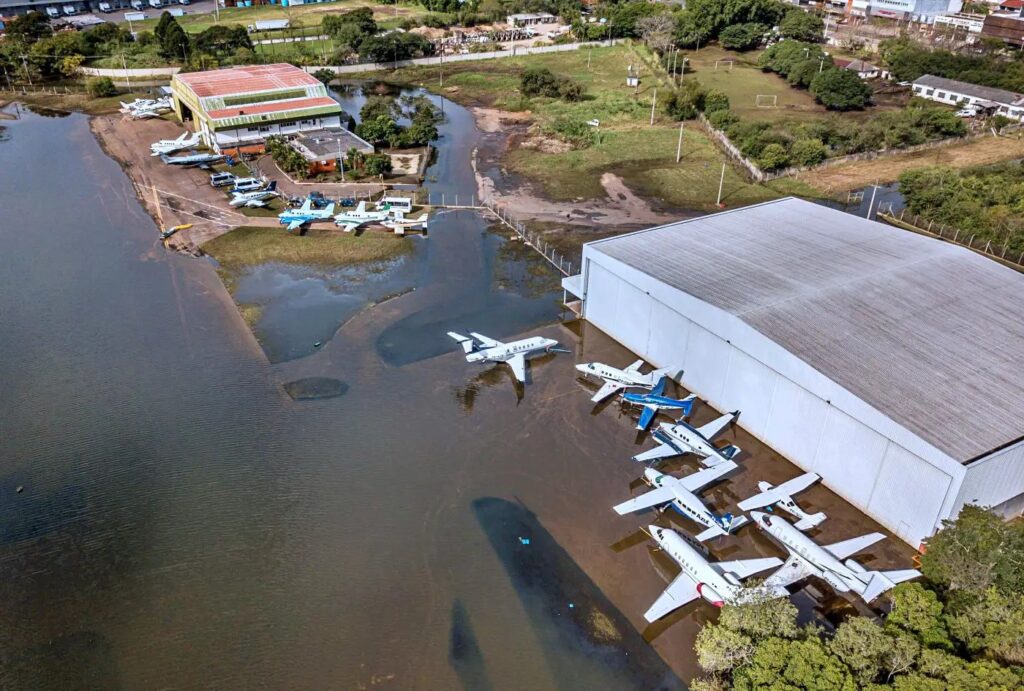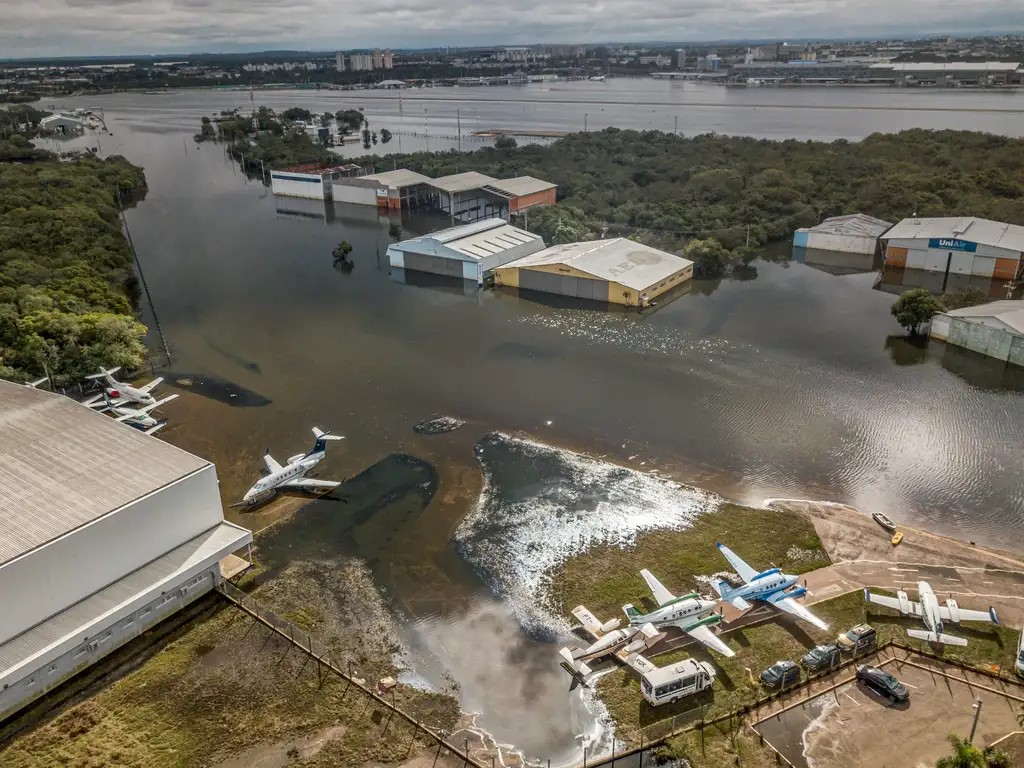
The catastrophic flooding in Porto Alegre at the beginning of May has been one of the biggest natural disasters to hit southern Brazil in many years. With 170 people dead and 70 people still missing, further heavy rain at the end of the month hampered clean-up operations and local authorities say that there is no clear end in sight. More than 600,000 people are temporarily homeless and the water levels remain stubbornly high.
Porto Alegre’s Salgado Filho International Airport has been closed for a month and there is still no reopening date. In a normal year, 8 million passengers would use Brazil’s 9th biggest airport. A temporary airport has been opened at Canoas Air Force base to provide facilities for cargo and temporary passenger services.
The Brazilian government and Fraport, the holders of the airport management concession, have just started the first inspections to assess damage. The passenger terminal has been damaged but it is unclear how the runways and taxiways and the airport navigation equipment have coped with the deluge and excessive rainwater. Ensuring that the airport is in operational condition will require a substantial investment. The government has already said it will look at extending the management concession to allow Fraport to restore the airport infrastructure.

The rains in the Rio Grande do Sul, Brazil’s fourth largest state, may have a negative effect on the country’s GDP with agricultural production severely affected. However, there will be major investment in the state infrastructure which may counterbalance this.
With no clear indication of when water levels will return to normal, the effect of the floods on the border duty free business in Uruguay and Brazil is hard to calculate. Weekend excursions from many towns in the state are of prime importance for shop operators on both sides of the border. Brazilian shoppers from Rio Grande do Sul are the biggest distinct group in the six Uruguayan towns where duty free shopping is allowed. Reports from Rivera and Rio Branco indicated to Travel Markets Insider that excursion numbers were devastated in May, and it is hard to predict when border towns will see a normal flow of shoppers.
John Gallagher









